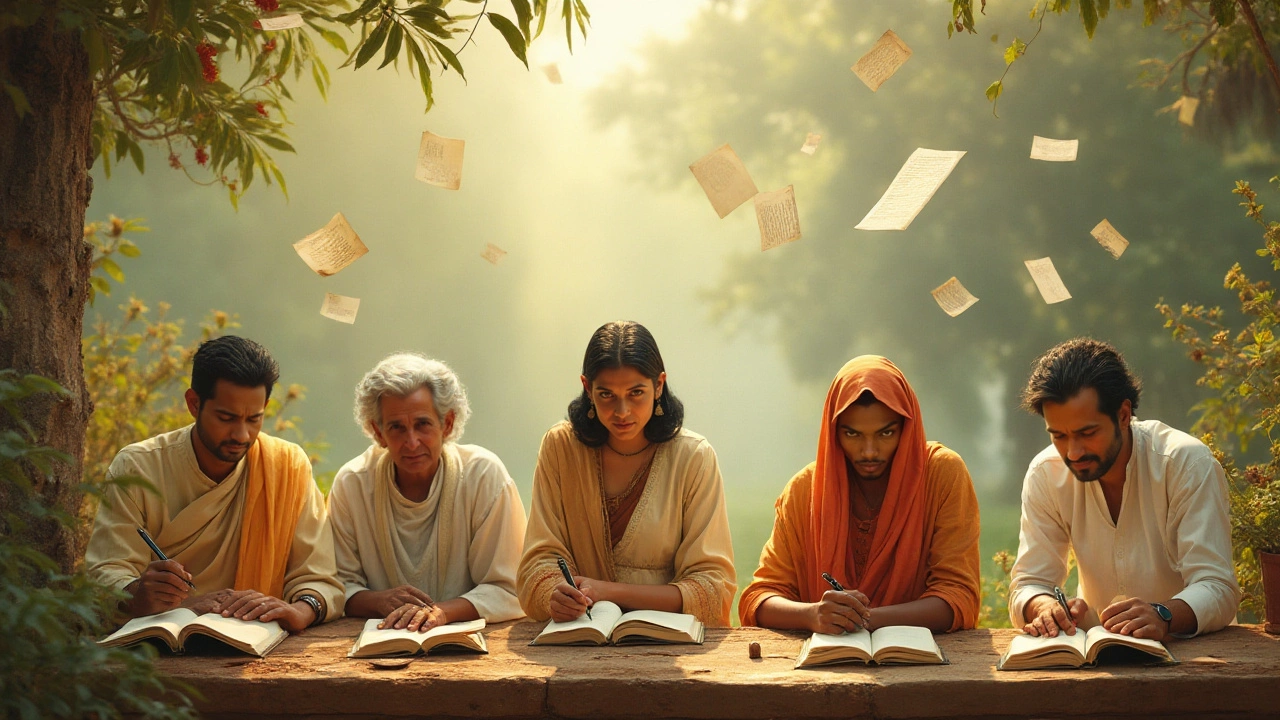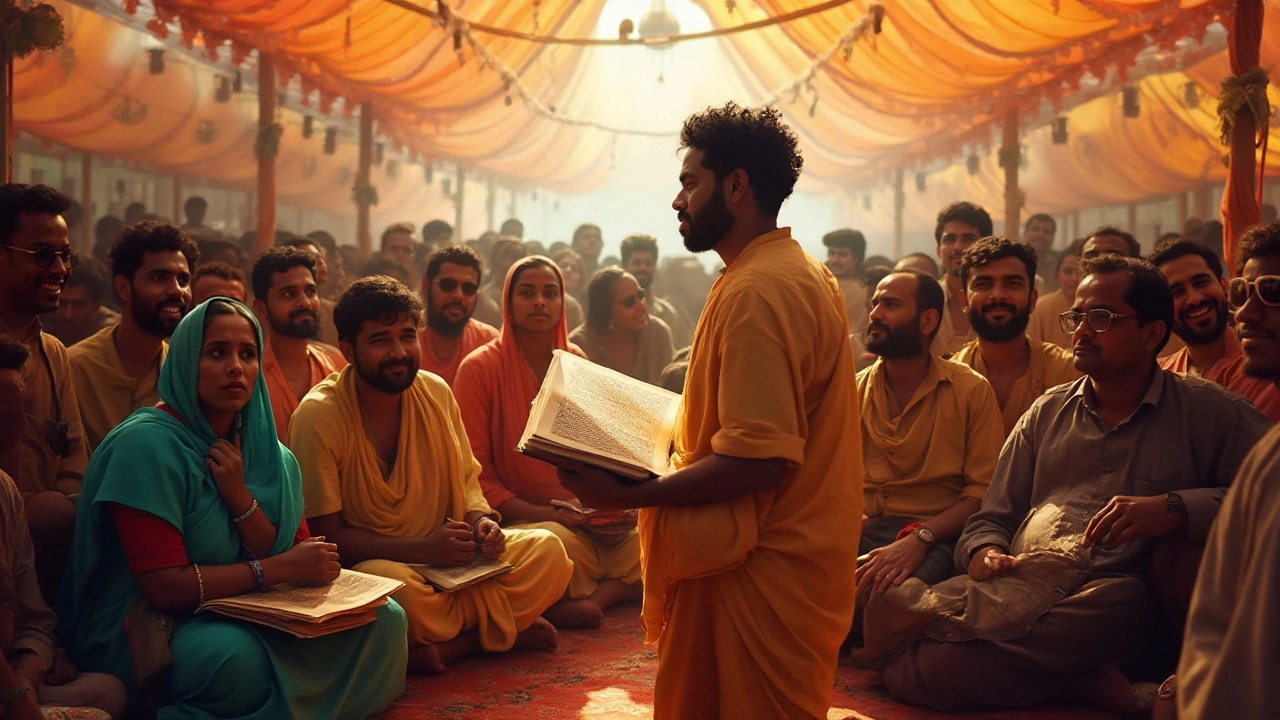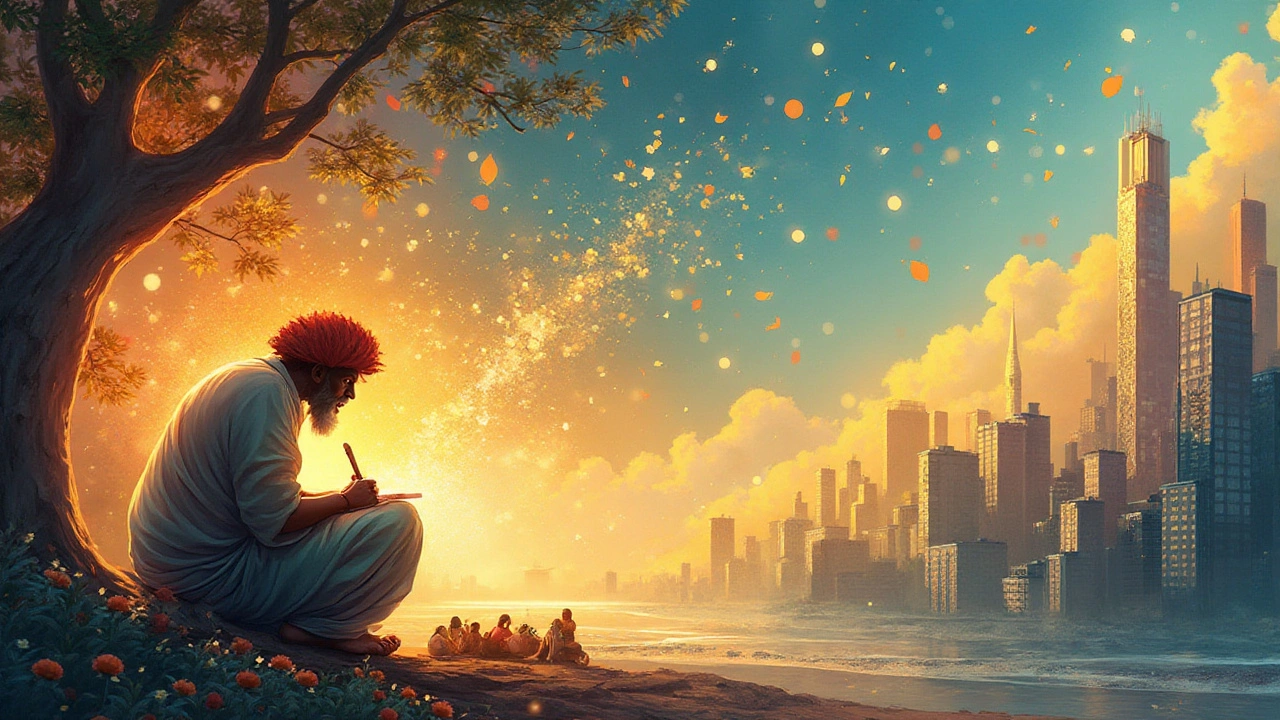
India, known for its rich tapestry of languages and dialects, has produced some of the most celebrated poets in the English language. These illustrious writers, often referred to as the 'Big 6', have woven narratives that transcend time and resonate with readers across the globe.
In this journey through the world of Indian poetry, we unravel the stories of these six iconic poets. We explore their artistic endeavors, uncover their unique influences, and understand how each has left an indelible mark on the world of literature. Their works, vibrant and powerful, offer insights not only into the Indian experience but into universal themes that connect us all.
- The Story Behind the 'Big 6'
- Meet the Iconic Poets
- Exploring Their Literary Contributions
- Legacy and Influence on Modern Poetry
The Story Behind the 'Big 6'
The term 'Big 6' refers to a collection of India’s most distinguished poets who have carved a niche for themselves in the realm of English poetry. These literary figures have not only enriched Indian literature but have also left a significant imprint on global readers. This group emerged during a time of great social and cultural change in India, bringing forth a tapestry of diverse thoughts and narratives in response to the post-colonial backdrop of the nation. Each poet carried a unique perspective, yet they shared a common thread of deep cultural consciousness interwoven with universal themes. Their stories are tales of resilience, genius, and above all, a deep commitment to the art of poetry.
Delving into the genesis of the 'Big 6', it becomes apparent that their rise was closely linked to the burgeoning literary circles that gained momentum throughout the mid-20th century. An emergence of voices that captured the complexities of identity, nationhood, and diaspora came into play, providing a platform for enriched storytelling and poetic expression. The Indian poets in the English language were uniquely positioned, often balancing dual identities and languages, which in turn ushered in an era of bold and innovative expressions in writing. It was a significant departure from traditional forms and themes, allowing the poets to craft their legacy upon the backdrop of a dynamic, ever-evolving literary canvas.
"In literary circles, the impact of the 'Big 6' is akin to that of the Romantics in English literature." - Professor Anand Kapoor, Indian Poetry Scholar
Each of these poets, under the umbrella of the 'Big 6', contributed in a way that was simultaneously individual and collective in its significance. They have over time inspired a younger generation, drawing attention to the enduring power of words. Their tales are not only about personal, political, or spiritual discoveries but also about capturing the pulse of a nation at a profound crossroads. Their creations have bridged the traditional with the contemporary, ensuring the sustained relevance and influence of Indian poets in the English literary world. An examination of their works offers fascinating insights into the dynamics of gender, class, and post-colonial identity, making them essential reading for anyone interested in understanding the beating heart of Indian poetry.
Meet the Iconic Poets
When we speak about the 'Big 6' of Indian poetry who's skilled use of the English language has earned acclaim, a captivating array of personalities come to mind. Each poet in this revered group has a story that is as profound and nuanced as the verse they craft. They stand as bulwarks of a tradition that dynamically fuses eastern narrative styles with western poetic forms. One of these iconic figures is Nissim Ezekiel, a voice of modernity in Indian literature who brought everyday life into the poetic realm. Through his incisive verse, Ezekiel offered a critical lens on Indian society and culture, illustrating the contradictions and charms of the urban experience. His post-colonial themes and simplicity opened a pathway for a new generation of Indian poets.
Alongside Ezekiel, another luminary in the firmament is Kamala Das, whose work resonates with youthful vividness and a fearless exploration of feminine identity and sexuality. Her daring is well-captured in classics like 'An Introduction', where she laid bare the struggles of being a woman in a patriarchal society. The intensity of her personal voice connects across cultural barriers, marking her as an essential figure in not just Indian poetry but in literature at large. In the endeavors of these poets, one perceives the vibrant colors of Indian life, as well as the shadows of history’s complexities.
"My language is human. It is the language of history, trauma, and memory." — Kamala Das
Adil Jussawalla brings yet another dimension with his focus on expatriation, alienation, and loss. His experience as a diasporic Indian imbues his work with a sense of dislocation and introspection. Poems such as those in "Missing Person" summon feelings of both belonging and estrangement, mirroring the post-colonial Indian consciousness. These motifs weave persistently through his oeuvre, causing readers worldwide to pause and contemplate their own sense of place and identity. Jussawalla’s powerful imagery and striking diction beckon readers into the deeper waters of contemplation and self-reflection.
The list continues with A.K. Ramanujan, renowned not only for his poetry but also for his translations from Tamil and Kannada into English. Ramanujan's bilingual and bicultural existence provided a rich wellspring for his creative work, allowing him to deftly bridge gaps between cultures. With his precise command of language, Ramanujan crafted poems that are at once deeply personal and widely relatable. His contribution extended beyond his poetry with efforts to preserve India's ancient texts for posterity, reflecting his reverence for both old and new traditions.
Each of these poets, along with others like Arun Kolatkar and Dom Moraes, played distinct roles in sculpting the course of modern Indian literature. Kolatkar’s work, dense with local imagery and cultural allusions, and Moraes’ elegant narratives, highlight the diversity of Indian English poetry. These poets have established a wealth of artistry and expression that continues to inspire generations. Their influence echoes in today’s literary conversations, setting a high benchmark and inviting new poets to challenge and redefine the boundaries of what Indian poetry can achieve. As we trace their paths, we join in the celebration of a multifaceted literary heritage that enriches global culture.

Exploring Their Literary Contributions
The landscape of Indian English poetry has been profoundly shaped by these extraordinary poets. Each has carved a niche with their unique styles, themes, and narrative techniques. From Rabindranath Tagore's lyrical expanses to Kamala Das’s visceral explorations of identity, the collective works of the Big 6 present a rich anthology of the human spirit, reflecting India's diverse tapestry. Their poems often address universal themes such as love, mortality, spirituality, and individuality, intriguing global readers with a distinctive Indian sensibility interwoven with these motifs. The varied backgrounds of these poets add to this diversity; they’ve drawn heavily from India’s cultural subtleties, political histories, and social dynamism in their works.
Tagore's poetic mastery transcends the conventional with its philosophical depth and lyrical beauty. His poetry renders nature as a muse while delving into the metaphysical, often invoking spiritual introspection. In his oeuvre, the song and dance of life vibrantly manifest, best illustrated in his timeless collection, 'Gitanjali'. Meanwhile, R. Parthasarathy entwines modern themes with traditional verse, exploring the confluence of personal and historical narratives. His nuanced grasp of language offers a profound commentary on the postcolonial identity, a thought echoed in his seminal work, 'Rough Passage'. Such poetic engagements exemplify the subversiveness and innovation these poets bring to their craft.
Kamala Das’s contribution likens to a bold, upfront conversation about feminism and personal emancipation. Often addressing topics that defy societal norms, Das’s verses strip down to raw emotional truths, introspecting deeply into womanhood and autonomy. Her poetic collection 'Summer in Calcutta' exemplifies her bold narrative structure and is a staple in Indian English literature. On the other end of the spectrum, nostalgic and region-centered themes run profoundly in the lines of A.K. Ramanujan’s poetry. His keen observations of the everyday transform into deep reflections, offering nuanced insights into cultural lives.
The legacy these poets leave behind is a vibrant mix of introspective and social commentaries that continue to influence contemporary Indian literature. Their works have paved the way for younger poets who grapple with similar themes in a continuously changing India. Their innovative experimentation with form and voice reflect a departure from traditional structures, thereby extending the boundaries of Indian poetry in English. These Big 6 have not only chronicled India's journey through time but they have also infused its literary terrain with robust dialogues that remain relevant today.
The Indian English poets have reset the whole theme of Indian literature, merging Western forms with distinct Indian experiences, creating a genre so truly one-of-a-kind that it speaks to the global village—Arvind Krishna Mehrotra

Legacy and Influence on Modern Poetry
As a nation steeped in cultural diversity and historical depth, India has nurtured poets whose legacies have extended well beyond their lifetimes. The impact of the Indian poets on modern poetry is profound, shaping the contemporary landscape with their distinctive blend of traditional themes and modern sensibilities. Their works continue to inspire a new generation of poets and readers by capturing the essence of human experience and the spirit of change. This mixture of influences encourages the ongoing evolution of poetry in India and across the globe, constantly bringing forth fresh perspectives and interpretations.
The English poetry landscape in India owes much to these literary giants, who managed to create a bridge between Indian cultural motifs and Western literary forms. This unique synthesis is evident in the way they addressed complex themes such as identity, belonging, and social justice. Through their writings, they've offered a voice to the colonized and to the independent thinker alike, asserting identity within the global diaspora. A wonderful example of this is the work of Rabindranath Tagore, who skillfully wove Indian philosophy and music into his English compositions. His universal appeal was recognized when he became the first non-European to win the Nobel Prize in Literature in 1913.
Their legacy endures not just in their published works but in the way modern poets embrace diversity in styles and subjects. The famous Indian writers have set a precedent for expressing the multifaceted Indian experience through poetry, opening doors for post-colonial writers and poets who came after them. This ongoing influence is significant when considering the rise of global literary figures such as Arundhati Roy, whose debut novel 'The God of Small Things' draws on the rich tradition of Indian storytelling combined with modern themes. As noted by critic Salman Rushdie, "Indian writing in English is one of its most remarkable happenings."
The influence of these poets is also evident in academia, where their works are essential in understanding the evolution of modern poetry. Courses dissecting their texts help students appreciate the nuances of language, metaphor, and cultural context. Literary giants like Kamala Das have expanded the discourse on gender and identity, revealing the inner world of women with a candidness rarely seen before. Her ability to concurrently explore personal and universal themes has set a benchmark for modern poets globally, providing a template for using personal experience as a powerful storytelling tool.
Transformations in publishing and technology have allowed a broader dissemination of their works. Poetry collections, once limited in reach, now find younger audiences through platforms that celebrate literary artistry. Today's Indian poets stand on the shoulders of these giants, with the freedom to experiment with form and voice like never before, ensuring that the legacy of the Big 6 endures well into the future.